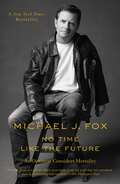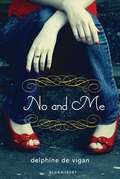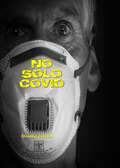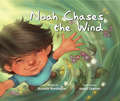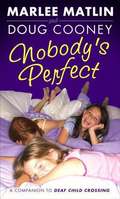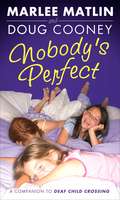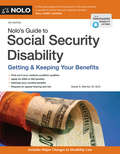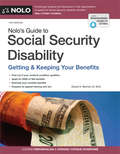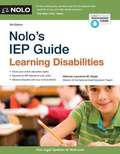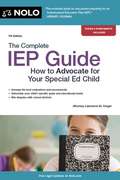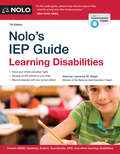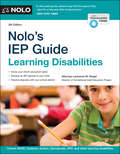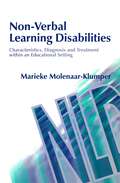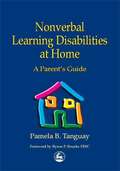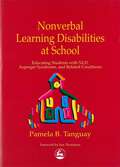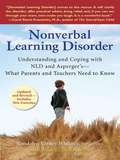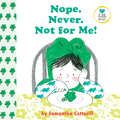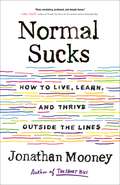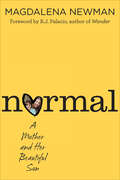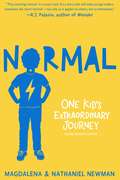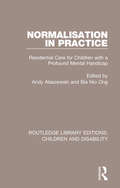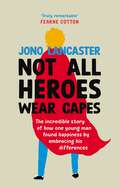- Table View
- List View
No Time Like the Future: An Optimist Considers Mortality
by Michael J. FoxINSTANT NEW YORK TIMES BESTSELLER A moving account of resilience, hope, fear and mortality, and how these things resonate in our lives, by actor and advocate Michael J. Fox. The entire world knows Michael J. Fox as Marty McFly, the teenage sidekick of Doc Brown in Back to the Future; as Alex P. Keaton in Family Ties; as Mike Flaherty in Spin City; and through numerous other movie roles and guest appearances on shows such as The Good Wife and Curb Your Enthusiasm. Diagnosed at age 29, Michael is equally engaged in Parkinson’s advocacy work, raising global awareness of the disease and helping find a cure through The Michael J. Fox Foundation for Parkinson’s Research, the world’s leading non-profit funder of PD science. His two previous bestselling memoirs, Lucky Man and Always Looking Up, dealt with how he came to terms with the illness, all the while exhibiting his iconic optimism. His new memoir reassesses this outlook, as events in the past decade presented additional challenges.In No Time Like the Future: An Optimist Considers Mortality, Michael shares personal stories and observations about illness and health, aging, the strength of family and friends, and how our perceptions about time affect the way we approach mortality. Thoughtful and moving, but with Fox’s trademark sense of humor, his book provides a vehicle for reflection about our lives, our loves, and our losses. Running through the narrative is the drama of the medical madness Fox recently experienced, that included his daily negotiations with the Parkinson’s disease he’s had since 1991, and a spinal cord issue that necessitated immediate surgery. His challenge to learn how to walk again, only to suffer a devastating fall, nearly caused him to ditch his trademark optimism and “get out of the lemonade business altogether.”Does he make it all of the way back? Read the book.
No Time to Lose: A Symposium
by Pauline M. MoorMultiply impaired blind children present special educational problems and as their number increases, their educational needs are of increasing concern, because many of them arrive at school severely retarded in their development. Several years ago the American Foundation for the Blind called a seminar to discuss teaching procedures then being used, as well as ideas for new techniques. The participants came from the field of special education; most were classroom teachers who had extensive experience with multiply impaired blind children. This report is an outgrowth of that meeting.
No and Me
by George Miller Delphine De ViganPrecocious thirteen-year-old Lou meets a homeless eighteen-year-old girl on the streets of Paris and Lou's life is forever changed.
No solo covid: No solo covid
by Claudio CalzoniNo solo covid por Claudio Calzoni Hay enfermedades que priman en los medios y en las redes sociales mientras que otras muchas quedan relegadas y casi olvidadas, como si fueran pasajeras y poco debilitantes. Claudio Calzoni testimonia una de ellas a través de las notas de su diario, lleno de poesía y sufrimiento.
Noah Chases the Wind
by Michelle Worthington Joseph CowmanNoah knew he was different. He could see things that others couldn't, like the patterns in the dust that floated down on sunbeams.Noah is different. He sees, hears, feels, and thinks in ways that other people don't always understand, and he asks a lot of questions along the way. Noah loves science, especially the weather. His books usually provide him with the answers he needs, until one day, there's one question they don't answer-and that is where Noah's windy adventure begins.Filled with rich, sweeping illustrations, this picture book celebrates the inquisitive nature of all children, including those on the autism spectrum, who cannot stop asking a question until an answer has been unearthed.The book contains a page of information for parents, caregivers, and educators about the importance of helping children feel good about their differences and know that being different is okay.Michelle Worthington was born in Brisbane, Queensland, and has lived there all her life. She is much-published author in Australia.Joseph Cowman lives and paints in the hills and valleys of suburban Idaho. He is a long-standing member of the Society of Children's Books Writers and Illustrators. He is the illustrator of six other Redleaf Lane books, including most recently, The Amazing Erik and Rita and the Firefighters.
Nobody's Perfect
by Marlee Matlin Doug Cooney"She's practically perfect," Megan said thoughtfully. She repeated the new girl's name, practicing the way Ms. Endee had written it on the whiteboard. Alexis Powell. Megan has spent forever planning her positively purple birthday sleepover. She's even made glittery purple invitations for every girl in her class. Then a new girl, Alexis, joins their class. Alexis seems perfect: She's smart, pretty, and rules the soccer games on the playground. But no matter how hard Megan tries to be a friend to Alexis, the new girl is aloof or rude. At first, Megan thinks Alexis is shy. Then Megan starts to fear that Alexis is treating her differently because she's deaf. When the girls are forced to collaborate on a science fair project, Megan learns the truth -- and realizes that nobody's perfect. Once again Marlee Matlin draws on experiences from her own childhood to tell Megan's story. In this funny, poignant book, readers will root for Megan, a spirited young girl who doesn't let anything stand in her way.
Nobody's Perfect
by Marlee Matlin Doug CooneyMegan has spent forever planning her positively purple birthday sleepover. She's even made glittery purple invitations for every girl in her class. Then a new girl, Alexis Powell, joins their class. Alexis seems perfect: She's smart, pretty, and rules the soccer games on the playground. But no matter how hard Megan tries to be a friend to Alexis, the new girl is aloof or rude. At first Megan thinks Alexis is shy. Then Megan starts to fear that Alexis is treating her differently because she's deaf. When the girls are forced to collaborate on a science fair project, Megan learns the truth -- and realizes that nobody's perfect. Once again Marlee Matlin draws on experiences from her own childhood to tell Megan's story. In this funny, poignant book, readers will root for Megan, a spirited young girl who doesn't let anything stand in her way.
Nolo's Guide to Social Security Disability: Getting & Keeping Your Benefits
by David A. Morton IIINolo's Guide to Social Security Disability covers the criteria for getting disability benefits for back problems, heart and cardiovascular disease, diabetes, cancer, autoimmune diseases, mental issues like depression and anxiety, and 200 more medical conditions. Learn how to match the medical details of your disability to Social Security regulations to make sure you have the right evidence to qualify for the benefits you're due when you apply. This guide is written by a former Chief Medical Consultant for the Social Security Administration whose expert deciphering of the medical portions of SSA regulations will help you understand how you can get benefits. If you've been denied benefits already, this book will tell you how to find out why and what steps to take to prove that you should get benefits on appeal. This edition is completely updated with the latest rules and information plus updated figures for 2018 and many updated medical listings.
Nolo's Guide to Social Security Disability: Getting & Keeping Your Benefits
by David A. Morton IIIQualify for Social Security disability benefits, quickly and easily Nolo's Guide to Social Security Disability covers the criteria for getting disability benefits for back problems, heart and cardiovascular disease, diabetes, cancer, autoimmune diseases, mental issues like depression and anxiety, and 200 other medical conditions. Learn how to match the medical details of your disability to Social Security regulations to make sure you have the right evidence to qualify for the benefits you're due when you apply. This guide is written by a former Chief Medical Consultant for the Social Security Administration whose expert deciphering of the medical portions of SSA regulations will help you understand how you can get benefits. If you’ve been denied benefits already, this book will tell you how to find out why and what steps to take to prove that you should get benefits on appeal. This edition is completely updated with the latest rules and information plus updated figures for 2020 and many updated medical listings.
Nolo's IEP Guide
by Lawrence M. SiegelCreate an individualized education plan (IEP) and secure the education your child deserves! Children with learning disabilities have different needs than other kids in special education let Nolo's IEP Guide: Learning Disabilities help you work with your child's school to make sure those needs are met. This one of a kind book walks you through the Individual Education Program process, providing all the instructions, suggestions, resources, and forms you need to understand the special education system. Step by step, you'll learn how to: understand your child's rights prepare to make your case untangle eligibility rules and evaluations develop effective IEP goals figure out the best programs, services and teaching strategies get ready for IEP meetings resolve disputes with the school district do legal research on learning disability issues This edition has been updated to reflect the latest laws, federal regulations, and court decisions that affect the IEP process, and includes fully up to date forms, sample letters, and resources to help you every step of the way. Plus, read an expanded section about "appropriate" education measures resulting from a recent U.S. Supreme Court case, and get new details on eligibility for special education services for your child.
Nolo's IEP Guide
by Lawrence Siegel AttorneyCreate an individualized education plan (IEP) and secure the education your child deserves! Children with learning disabilities have different needs than other kids in special education -- let Nolo's IEP Guide: Learning Disabilities help you work with your child's school to make sure those needs are met. This one-of-a-kind book walks you through the Individual Education Program process, providing all the instructions, suggestions, resources, and forms you need to understand the special education system. Step by step, you'll learn how to: understand your child's rights prepare to make your case untangle eligibility rules and evaluations develop effective IEP goals figure out the best programs, services and teaching strategies get ready for IEP meetings resolve disputes with the school district do legal research on learning-disability issues The 5th edition has been updated to reflect the latest laws, federal regulations, and court decisions that affect the IEP process, and includes fully up-to-date forms, sample letters, and resources to help you every step of the way. Plus, read an expanded section about "appropriate" education measures resulting from a recent U.S. Supreme Court case, and get new details on eligibility for special education services for your child.
Nolo's IEP Guide: Learning Disabilities
by Lawrence SiegelHow to advocate for your child's education. According to the National Center for Learning Disabilities, 2.4 million children in the U.S. are diagnosed with learning disabilities – and these children have unique educational needs. While federal law entitles each of these children to an “appropriate” education, making sure teachers and school administrators are addressing a child’s special needs and providing the proper services can feel like an uphill battle. This book will help guide you through your child’s IEP process by explaining your child’s rights and teaching you how to draft educational goals and objectives, research school programs and alternatives, prepare for IEP meetings, and resolve disputes with your school district. Learn how to : identify a learning disability understand your child's rights to education untangle eligibility rules and evaluations prepare and make your best case to school administrators develop IEP goals and advocate for their adoption, explore and choose the best programs and services. Nolo's IEP Guide: Learning Disabilities is written by an expert who's fought for kids for many years.
Nolo's IEP Guide: Learning Disabilities
by Lawrence SiegelHow to advocate for your child’s education Many children have learning disabilities—and it’s up to parents and schools to work together to ensure that each child’s unique educational needs are met. But what if the school disagrees with your goals for your child? You are at a disadvantage if you don’t know the law. This book teaches you to: identify a learning disability understand your child's rights to education untangle eligibility rules and evaluations prepare and make your best case to school administrators develop IEP goals and advocate for their adoption, and explore and choose the best programs and services. Written by an expert who’s fought for kids for many years, the 8th edition includes summaries of important court decisions and expanded information on independent evaluations and bullying, and provides the forms, sample letters, resources, and encouragement you need. With Downloadable Forms: download forms, letters and resources (details inside).
Non-Sighted and Sighted Adults' Volumetric Perceptions of Functional Objects
by T. M. Nelson C. J. Ladan J. EppsA report on the study of the manner in which sighted, sighted-but-blindfolded, late-blind (subsequent to 7 years of age), and congenitally blind (blind since birth) persons employ physical parameters in determining weight and volume of functional objects.
Non-Verbal Learning Disabilities: Characteristics, Diagnosis and Treatment within an Educational Setting
by Marieke Molenaar-KlumperThis is an accessible introduction to Nonverbal Learning Disabilities (NLD), a syndrome which was first recognized in the 1970s. Since this time, the number of children diagnosed with NLD, a condition that combines both behavioural and coordination problems, has been slowly rising. Marieke Molenaar-Klumper provides an overview of the varied opinions expressed about NLD. Inspired by extensive research, she describes the cognitive, psychometric, socio-emotional and visual aspects of this syndrome. She also discusses how NSD can be diagnosed and describes how the syndrome associates itself with other conditions. She completes her overview of NLD by suggesting practical treatment strategies that can be applied both at home and in school.
Nonverbal Learning Disabilities at Home: A Parent's Guide
by Pamela Tanguay Byron RourkeDo you know a child who is bright, charming and articulate, but has no friends? A child who showed early signs of intelligence, but is now floundering, academically and emotionally? Children with Nonverbal Learning Disabilities (NLD) are an enigma. They're children with extraordinary gifts and heartbreaking challenges that go far beyond the classroom. Nonverbal Learning Disabilities at Home explores the variety of daily life problems children with NLD may face, and provides practical strategies for parents to help them cope and grow, from preschool age through their challenging adolescent years. The author, herself the parent of a child with NLD, provides solutions to the everyday challenges of the disorder, from early warning signs and self-care issues to social skills and personal safety. User-friendly and highly practical, this book is an essential guide for parents in understanding and living with NLD, and professionals working with these very special children.
Nonverbal Learning Disabilities at School: Educating Students with NLD, Asperger Syndrome and Related Conditions
by Pamela TanguayMost teachers will at some point come across a child with nonverbal learning disabilities, and this practical and informative book will be invaluable in helping them to help such children to achieve their full potential in the classroom. Topics such as finding the right school, curriculum modifications, and social and emotional issues experienced by children with NLD are covered. However, the bulk of the book outlines specific teaching strategies, from how to deal with essay questions, to tips on helping the student master long division and ideas for improving reading comprehension. The author defines and discusses concepts such as frontloading and a cooperative learning environment, and discusses how they benefit the student with NLD.
Nonverbal Learning Disorder
by Whitney Rondalyn VarneyMillions of children suffer from Nonverbal Learning Disorder, a neurological deficit that prevents them from understanding nonverbal cues like tone of voice and facial expression. Though they are exceptionally bright and extremely articulate, these children often have difficulty in social situations-and can become depressed, withdrawn, or anxious. In Bridging the Gap, Rondalyn Varney Whitney-a pediatric occupational therapist and the parent of a child with NLD-offers practical suggestions that will help parents put their child on the path to a happy, fulfilling life.
Nope. Never. Not For Me! (Little Senses)
by Samantha CotterillThis deceptively simple story guides sensitive kids through trying a new food, with support and encouragement aplenty.Children are often picky eaters, but for kids on the autism spectrum or with sensory issues, trying new foods can be especially challenging. In Nope! Never! Not for Me! a young child refuses to try a bite of broccoli--that is, until her mom guides her through a careful exploration of the new food. First she looks, then she sniffs, then touches, and finally takes one tiny bite. What do you know? Broccoli isn't so overwhelming after all! With simple, reassuring text and bold illustrations in a limited palette, Nope! Never! Not For Me! espouses a patient approach to picky eating and empowers kids to explore new experiences without stress or pressure.
Normal Sucks: How to Live, Learn, and Thrive Outside the Lines
by Jonathan MooneyConfessional and often hilarious, in Normal Sucks a neuro-diverse writer, advocate, and father meditates on his life, offering the radical message that we should stop trying to fix people and start empowering them to succeedJonathan Mooney blends anecdote, expertise, and memoir to present a new mode of thinking about how we live and learn—individually, uniquely, and with advantages and upshots to every type of brain and body. As a neuro-diverse kid diagnosed with dyslexia and ADHD who didn't learn to read until he was twelve, the realization that that he wasn’t the problem—the system and the concept of normal were—saved Mooney’s life and fundamentally changed his outlook. Here he explores the toll that being not normal takes on kids and adults when they’re trapped in environments that label them, shame them, and tell them, even in subtle ways, that they are the problem. But, he argues, if we can reorient the ways in which we think about diversity, abilities, and disabilities, we can start a revolution.A highly sought after public speaker, Mooney has been inspiring audiences with his story and his message for nearly two decades. Now he’s ready to share what he’s learned from parents, educators, researchers, and kids in a book that is as much a survival guide as it is a call to action. Whip-smart, insightful, and utterly inspiring—and movingly framed as a letter to his own young sons, as they work to find their ways in the world—this book will upend what we call normal and empower us all.
Normal: A Mother and Her Beautiful Son
by Magdalena NewmanA moving and “inspiring” memoir from the mother of a child with Treacher Collins syndrome, with a foreword by R.J. Palacio, author of Wonder (Publishers Weekly, starred review).For Magda Newman, normal was a goal—she wanted her son Nathaniel to be able to play on the playground, swim at the beach, enjoy the moments of childhood that are often taken for granted. But Nathaniel’s severe Treacher Collins syndrome—a craniofacial condition—meant that other concerns came first. Could he eat without the aid of a gastrointestinal tube? Could he hear? Would he ever be able to breathe effortlessly? In this moving memoir, Newman, with the help of her son, tells the story of raising Nathaniel, from the shock she and her husband faced when he was born, to the inspiration of Nathaniel’s own strength and quirky humor. All this while also facing both non-Hodgkins and Hodgkins lymphoma diagnoses of her own. This uplifting story of a family tackling complex and terrifying circumstances with love and resilience is a true testament to Magda and her family, and to families everywhere who quietly but courageously persist.
Normal: One Kid's Extraordinary Journey
by Magdalena Newman Nathaniel NewmanA beautifully illustrated and lyrical picture-book biography of eccentric and beloved writer Praised by R.J. Palacio as &“wondrous&”—this moving memoir follows a teenage boy with TC syndrome and his exceptional family from diagnosis at birth to now. &“This touching memoir is a must-read for anyone who wants to know more about the real-world experiences of a child with craniofacial differences and his extraordinary family. It&’s also more than that. It&’s a story about the love between a mother and a son, a child and his family, and the breadth of friends, helpers, and doctors that step in when the unexpected happens. It&’s a story that will make young readers reevaluate the word &‘normal&’—not only as it applies to others, but to themselves. Any book that can do that is pretty wondrous, as far as I&’m concerned.&” —R.J. Palacio, author of WonderNormal. Who is to say what this word means? For Magda Newman, it was a goal. She wanted her son Nathaniel to be able to play on the playground, swim at the beach, enjoy the moments his friends took for granted. But Nathaniel&’s severe Treacher Collins syndrome—a craniofacial condition—meant that other concerns came first. Could he eat without the aid of a gastrointestinal tube? Could he hear? Would he ever be able to breathe effortlessly? But Nathaniel looks at &“normal&” from a completely different perspective. In this uplifting and humorous memoir that includes black-and-white comic illustrations, mother and son tell the story of his growing up—from facing sixty-seven surgeries before the age of fifteen, to making friends, moving across the country, and persevering through hardships. How they tackle extraordinary circumstances with love and resilience is a true testament to Magda and Nathaniel&’s family, and to families everywhere who quietly but courageously persist.
Normalisation in Practice: Residential Care for Children with a Profound Mental Handicap (Routledge Library Editions: Children and Disability #Vol. 1)
by Andy Alaszewski Pauline Bn OngFirst published in 1990, this book was the first informed study to focus on care within the voluntary sector. Written with the child in mind, it is a sensitive work which explores the administration, strategy, and problems facing carers in children’s homes, at that time. <P><P>Centring on small, community-based facilities, the authors discuss the processes involved in setting up and running such facilities. They examine the difficulties of evaluating progressive services that are influenced by the philosophy of normalisation, and highlight the lessons from which other providers of services are able to learn. <P><P>Written by experienced researchers with contributions from service managers, Normalisation in Practice offers pragmatic advice on managing innovation efficiently without neglecting the needs of the child. Detailed interviews are combined with theoretical insight to provide an important guide for students and practitioners and a model for academics undertaking evaluative research. Although written at the start of the 1990s, this book contains discussions and material that are still very relevant to the subject today.
Not All Heroes Wear Capes: The incredible story of how one young man found happiness by embracing his differences
by Jono Lancaster'An extraordinary story of transformation and inner strength' - KATIE PIPER'Well worth reading: a tale of real heroism and obstacles overcome' - THE MAIL ON SUNDAY'Truly remarkable and so helpful' - FEARNE COTTON'Finding self-acceptance hasn't always been easy. I was abandoned at birth with a facial difference, and as I got older, I began to hate my face and the world I lived in.Gradually, through trial and error, random moments with strangers, and some tragic haircuts, I've found self-love and happiness.This book is the story of how I found my way out of difficult times, and how you can do the same.'Jono Lancaster was born with Treacher Collins Syndrome - a condition that affects facial appearence - and at only two weeks old, he found himself in foster care. In his remarkable story, Jono shares the highs and lows of his journey and how he turned his differences into his greatest strengths.Inspirational, empowering and moving - this is an extraordinary memoir with a powerful message: you are strong enough to become your own hero. (Cape optional.)
